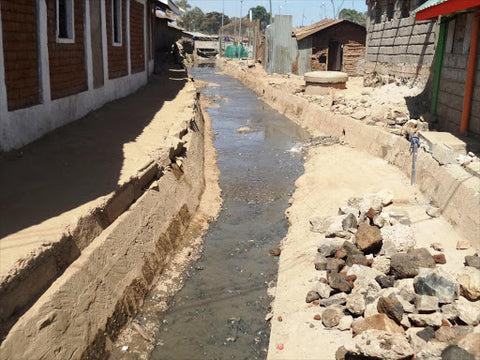Breaking Down the Tactics of the Tactical Bipod
If you’ve navigated the gun universe for any amount of time, you know full well that everyone has an opinion on every single piece of gear or accessory in the pew community and the tactical bipod is no exception.
Granted, it’s not quite as vigorous as the 1911 vs Glock debate or the AR vs AK discussion.

AR, obviously...
In the first part of this tactical bipod series, we’ve already covered how the military has widely adopted the use of tactical bipod and that it was a decision born out of combat during the Global Wars on Terror.
So if you’ve really got beef with the tactical bipod, then take that up with Marines.
For the rest of you, we’re going to break down some of the tactical advantages and utility of the modern tactical bipod.
A Quick Acknowledgment to the Tactical Bipod Haters
Here at Tier One, we are not in the business of producing useless products. We put too much care and time into our proprietary manufacturing process to waste our customer’s time.
That being said, there is one argument put forward by the tactical bipod haters that I would like to acknowledge as valid.
Namely, if you are not going to use your tactical bipod or even try to understand its best utility, then there is no reason to weigh down your weapon.
Rifles like the AR are lightweight, magazine fed, gas-operated, air-cooled, and shoulder-fired weapons.
I too find it amusing when people purchase a rifle platform and then trick it out like a Christmas tree with every accessory under the sun and make it a heavyweight weapon...

We found this on the interwebs and were going to cite the source, but figured you'd rather stay anonymous...
The tactical bipod serves a legitimate function though, and if you have no intention of ever using the bipod, then it becomes nothing more than decoration.
That’s about as far as I can go with my tactical bipod hating gun brethren. So we’ll spend the rest of this article showing you the practical and tactical utility of a tactical bipod.
Bipods Keep the Weapon Clean During a Fight
On perhaps my first night patrol in Iraq with the United States Marine Corps, I felt somewhat invincible. As grunts, we set out on foot armed to the teeth and with NVGs guiding us through the night.
Now, as remarkable as night vision goggles were at the time, they suck something awful at offering depth perception. This led me to step into a knee deep hole of what I can only assume was sewer water from the smell.
Thankfully, I had good trigger discipline and the only sound to ring out through the night was the splash and a few profanities that I threw out.
It was in this same waste filled alleyway that we then had a tactical pause which caused many of my fellow Marines to head down to the prone position, only to realize that they too were now laying in wastewater.
We paused for approximately 15 minutes until we got the word to step back out. The point of this entire story is that in combat, you will find yourself operating and fighting in some pretty shitty conditions.
In my case, that was literal.

If you put your AR in a sewer you're gonna have a bad time...
A tactical bipod offers you the ability to remain in the prone position for extended periods of time while keeping your weapon out of the dirt, mud, or well, shit.
If you have ever found yourself in the prone position for half an hour while the officers figure out where they are supposed to be heading, then you know of what I speak and you can see this passive utility of the tactical bipod.
Which leads us to the next utility.
Tactical Bipods Keep the Weapon Downrange and Reduce Fatigue
For all the tactical bipod haters who complain about the weight, they often fail to recognize one of the most common functions in combat.
Namely, that’s pulling security.
This could be a fixed or hasty position, but pulling security can be grueling in length and boredom.
A Marine on post in combat stands ready to defend his brethren against any threat, but mostly, Marines on post are bored out of their minds. I’d like to tell you all the things that Marines do to pass the time, but this is a family website I suppose, so we’ll leave out the details.
Security involved remaining in a fixed position for an extended period of time while waiting on an enemy that may never arrive.
The tactical bipod keeps the weapon pointing down range and does not require any physical effort to keep it that way.
I’m sorry, but unless you’ve laid in the prone position for an hour or wasted away 8 hours on a remote post, you don’t really get to say that we should be holding that rifle up the entire time.
It’s not practical and never going to happen. I operated in an era before the tactical bipod and my rifle was leaned up against the wall 95% of the time.
I would have loved a bipod that kept my weapon at the ready and on target.
Tactical Bipods Create Flexible Fighting Positions
It is often said that a day of combat is 23 hours and 45 minutes of boredom followed by 15 minutes of sheer terror. I can testify that this is very much the case in my experience.
When those 15 minutes arrive, there is rarely a perfectly stacked set of sandbags at exactly the right height or soft and padded fighting position waiting for you.
The tactical bipod allows you to set up a stable fighting platform in a variety of environments. That means flat terrain, sandy terrain, rocky terrain, urban terrain, wet terrain, and I think you get the point.

Nice, comfy rocks
There is no question that bipods assist with accuracy which is why you see them used regularly in long range shooting competitions.
The military adopted the bipod because they wanted to replicate some of that accuracy in a variety of settings and terrains. If for some reason, the terrain does not lend itself to a bipod, then simply retract them carry on like normal.
However, for all the places you may find yourself in combat, there is likely to be a time and place where a tactical bipod would have done you well.
A Final Argument for the Tactical Bipod
In general, we here at Tier One don’t really care how you pew pew pew, just so long as you pew. So while we have posed some tactical considerations, the choice really is yours. If I could make a final argument in support of the tactical bipod, it would be this.
We make some awesome tactical bipods, we really do. I know that is self-serving, but if you have found your way to this article then I would be remiss if I didn’t point you to what we offer.
Our Tactical Bipods are all engineered and machined on our own 5 axis CNC machinery in house. We don’t outsource any part of our production to the cheapest third world country and stand by everything we produce.
They are carbon fiber and lightweight which destroys the “bipods add too much weight” argument against them.
They are tough, resilient, and proven to operate under duress. So if you are considering a tactical bipod, don’t leave this article without checking us out.
With that being said, stay safe, train hard, and live free with or without a tactical bipod.

About the author:
Jeff Edwards is a United States Marine veteran of Iraq who served as an infantryman during the early days of Operation Iraqi Freedom in 2003. In addition to being a lover of the 2nd Amendment he runs the blog UnprecedentedMediocrity.com and regularly contributes the written word as a freelance writer and blogger.
